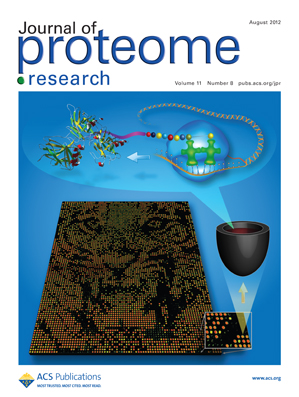

News and Publications
2018 – Spotiton, CryoEM sample preparation
Engineering Arts has developed and licensed for commercialization the Spotiton instrument for preparing protein samples for CryoEM. We are very fortunate to be working with TTP Labtech as our commercialization partner. For more info visit the TTP Labtech Spotiton website or see our applications page
2018 – High Density Nucleic Acid Programmable Protein Array (HD-NAPPA) platform installed at Virginia G. Piper Center for Personalized Diagnostics.
Engineering Arts working in close collaboration with the Arizona State University Biodesign Institute, Virginia G. Piper Center for Personalized Diagnostics (VGPCPD) has developed the HD-NAPPA protein microarray platform. HD-NAPPA allows proteins to be expressed in-situ from DNA printed into (1”x3”) silicon nanowell (SiNW) devices instead of the more conventional and problematic process of generating and printing purified proteins on coated glass. Two key technologies / instruments are in daily use at the VGPCPD lab.
1) Advanced piezoelectric printing instrument (Rainmaker v2) which enable us to target and functionalize batches of SiNW devices up to 20,000 of unique protein coding DNA reagents per device.
2) Assay apparatus to fill and seal the SiNW devices with bulk reagents for diffusion free protein synthesis.
The platform is used in applications for biomarker identification, drug target discovery, and protein-protein interaction studies.
Our current working density allows us to screen serum samples against greater than 20,000 biomarkers with a single 1x3” SiNW device. Several studies using HD-NAPPA are currently in process at VGPCPD. The following peer review publications describe the technology and completed studies in more detail:
High Density Diffusion-Free Nanowell Arrays (featured on cover)
Bharath R. Takulapalli, Ji Qiu, D. Mitchell Magee, Peter Kahn, Al Brunner, Kristi Barker, Steven Means, Shane Miersch, Xiaofang Bian, Alex Mendoza, Fernanda Festa, Karan Syal, Jin G. Park, Joshua LaBaer, and Peter Wiktor
Journal of Proteome Research 2012 11 (8), 4382-4391
DOI: 10.1021/pr300467q (2013)
Antiviral Antibody Profiling by High-density Protein Arrays
Bian, X., Wiktor, P., Kahn, P., Brunner, A., Khela, A., Karthikeyan, K., Barker, K., Yu, X., Magee, M., Wasserfall, C. H., Gibson, D., Rooney, M. E., Qiu, J. and LaBaer, J.,
Proteomics, 15: 2136–2145.
doi: 10.1002/pmic.201400612 (2015)
Peter Wiktor, Al Brunner, Peter Kahn, Ji Qiu, Mitch Magee, Xiaofang Bian, Kailash Karthikeyan and Joshua LaBaer
Scientific Reports 5, Article number: 8736 doi:10.1038/srep08736 (2015)
Karthikeyan K, Barker K, Tang Y, Kahn P, Wiktor P, Brunner A, Knabben V, Takulapalli B, Buckner J, Nepom G, LaBaer J, Qiu J.
Mol Cell Proteomics. 2016 Jul;15(7):2324-37. doi: 10.1074/mcp.M115.057661. (2016)
We gratefully acknowledge the NIH, NATIONAL INSTITUTE OF GENERAL MEDICAL SCIENCES for supporting this effort. Grant Number: 5R42RR031446-02
Patent Pending with ASU AzTE.
For further information on HD-NAPPA and collaboration opportunities contact: Peter Kahn
Select Publications using Engineering Arts Dispense Head Components
We collaborate with several groups who integrate Engineering Arts dispense heads and drive electronics into their own instruments for unique applications. The following select publications describe the applications:
A new method for vitrifying samples for cryoEM.
Razinkov I, Dandey VP, Wei H, Zhang Z, Melnekoff D, Rice WJ, Wigge C, Potter CS, Carragher B.
J Struct Biol. 195(2):190-198. (2016)
Mylvaganam Jeyakanthan, .. Lori J. West
American Journal of Transplantation
doi: 10.1111/ajt.13625 (2015, Accepted in advance of publication).
Masters Thesis, Copies available on request (2015)
William D. MacNeill
S. Palanco,* S. Marino, M. Gabás, L. Ayala and J.R. Ramos-Barrado
Nanoscale, 2015, 7, 492
Eugenia Pechkova, Peter Wiktor, Nicola Bragazzi, Fernanda Festa, Claudio Nicolini
NanoWorld Journal 04/2015; 1(1):26-31. DOI: 10.17756/nwj.2015-004
Wenbin Liang, S Wang, F Festa, P Wiktor,W Wang, M Magee, J LaBaer, Nongjian Tao
Analytical Chemistry 08/2014; 86(19). DOI:10.1021/ac5024556
Spotiton: A prototype for an integrated inkjet dispense and vitrification system for cryo-TEM
Tilak Jain, Patrick Sheehan, John Crum, Bridget Carragher, Clinton S. Potter
Journal of Structural Biology, Volume 179, Issue 1, (2012)
In situ electroporation of surface-bound siRNAs in microwell arrays
Tilak Jain, Adrian Papas, Amol Jadhav, Ryan McBride and Enrique Saez
Lab Chip, 2012, 12, 939
Isha Ghai, John Wentz, Richard E. DeVor, Shiv G. Kapoor and Johnson Samuel
Journal of Manufacturing Science and Engineering FEBRUARY 2010, Vol. 132
For further information on collaborating with us and putting picoliter dispense technology into your instrument designs contact: Peter Kahn
January 2013 – Engineering Arts advances into Phase 2 of NIH $2.1Million STTR Grant for developing and commercializing High Density Nucleic Acid Programmable Protein Arrays (NAPPA).
Engineering Arts is in close collaboration with the Arizona State University Biodesign Institute, Virginia G. Piper Center for Personalized Diagnostics to miniaturize their current NAPPA protein array technology. NAPPA technology allows proteins to be expressed in-situ from DNA on the array surface instead of the more problematic process of generating and printing purified protein onto arrays. NAPPA current array density is ~2300 genes per standard microscopic slide. At this density, it requires more than 10 arrays to cover the human proteome which encodes roughly 30,000 proteins. One critical limiting factor for higher densities is the cross-talk among neighboring genes when they are arrayed too close to each other. Together, we are developing HD-NAPPA (20,000 features per slide) through advanced piezoelectric-pipetting on silicon nanowells (SiNW) resulting in higher performance and lower assay costs for use in applications in biomarker identification, drug target discovery, and protein-protein interaction studies. The HD-NAPPA platform also supports post-translational modification chemistries.
We gratefully acknowledge the NIH, NATIONAL INSTITUTE OF GENERAL MEDICAL SCIENCES for supporting this effort. Grant Number: 5R42RR031446-02
August 2012 – Technical Note “High Density Diffusion-Free Nanowell Arrays” is featured on the cover of ACS: Journal of Proteome Research

May 2012 – NIH Awards Engineering Arts Phase 1 SBIR for siRNA Miniaturized Genomic Screening Platform
Grant Number: 1R43HG006822-01. Recent publication describes the preliminary work in the application area: “In situ electroporation of surface-bound siRNAs in microwell arrays” Tilak Jain , et al. Lab Chip, 2012,12, 939-947. We gratefully acknowledge the NIH for supporting this effort.
April 2012 –Engineering Arts dispense heads used in cryo-TEM instrumentation
A good example of Engineering Arts custom instrumentation / OEM development abilities. For more details see recent publication: “Spotiton: A prototype for an integrated inkjet dispense and vitrification system for cryo-TEM” Tilak Jain, et al. Elsevier: Journal of Structural Biology, 2012 DOI: 10.1016/j.jsb.2012.04.020
March 2012 - Silicon Nanowell Protein Array Platform Installed
Engineering Arts has developed a novel protein microarray platform based on Silicon Microwells (patent pending) and NAPPA chemistry. An NIH $2.1 Million Fastrack Grant Award is helping to fund this effort. The system has been developed in collaboration with the ASU Biodesign Center for Personalized Diagnostics (CPD). A next generation 16 head Rainmaker Dispense System to manufacture and test the new protein microarray platform has been installed at CPD.
Sep 2010 - NIH awards Engineering Arts $2.1 Million Fast Track STTR Grant
Grant Number: 5R42RR031446‐02
Engineering Arts is developing a novel protein microarray platform for identifying cancer biomarkers. The project includes developing robust high volume manufacturing technology for commercialization.
June 2008 - Engineering Arts LLC is formed
A privately held company by Peter Wiktor, Aurigin Technology and Peter Kahn is formed. Headquarters remain in Tempe Arizona.
July 2008 - Major Diagnostic Company Receives Engineering Arts Print Heads and Systems
A major diagnostic company has received two customized benchtop research systems to develop next generation assays for use in clinical diagnostic applications.
Dec 2006 - Engineering Arts Signs ActivePipette Commercialization Agreement with Aurigin Technology
Aurigin Technology is a Singapore based company in the business of design, development and manufacture of automation machines and manufacturing solutions. The alliance allows Engineering Arts to offer customers more complete and cost effective microdispense solutions in a shorter period of time by leveraging Aurigin Technology's Engineering resources and experience.
Sep 2006 - Engineering Arts Relocates to Tempe AZ and Expands Manufacturing Floor Space
Engineering Arts has moved to a new site in Tempe Arizona. The site just minutes from Phoenix Sky Harbor Airport. Facilities include a class 1000 cleanroom for engineering services and print head manufacturing.
Aug 2006 - Engineering Arts Delivers First Benchtop Microdispense Systems
A major diagnostic company is utilizing one system for proof-of-concept testing in a diagnostic instrument development program. Another system is being used at the Fred Hutchinson Cancer Research Center to develop RNAi protocols under an SBIR Phase II grant.
Jan 2004 - Major Commercial Microarray Manufacturer Standardizes on Engineering Arts Print Head Technology
A major manufacturer of microarrays is able produce higher density and higher quality microarrays by retrofitting their microarrayer equipment with Engineering Arts print heads.
July 1993 - Engineering Arts is Founded
Peter Wiktor founds the Engineering Arts company to develop Activepipette dispense technology for picoliter dispense. Seattle Washington.